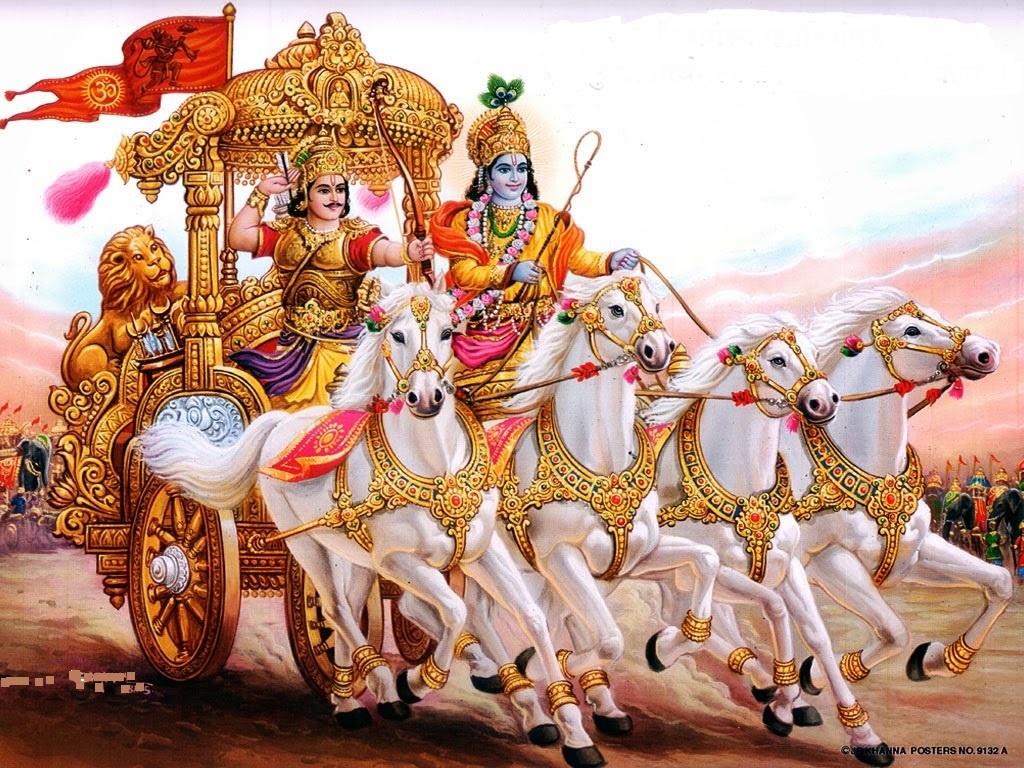The Spiritual Import of the Mahabharata and the Bhagavadgita :13-13.
Chapter 13: Centring the Mind in the Heart-13.
When we chant Om we must also feel what we are chanting, and not merely feel, but also understand what it is.
The whole being is there; that is called yoga—the union of the totality of being with the wholeness of the object. Such a person who departs from this world by the practice of yoga in this manner reaches the supreme state.
He is not reborn; he does not come back to this world of mortality—yah prayati tyajan deham sa yati paramm gatim.
All this may look very terrific, almost impractical for people living in this humdrum world of activity and business.
“Is this yoga meant for me?”
The great Teacher says : -
“Do not be afraid; I am very easy of approach. I am not a difficult person, as you may imagine Me.”
Ananya-cetah satatam yo mam smarati nityasah, tasyaham sulabhah partha nitya-yuktasya yoginah.
“I am easy of attainment by those who are united with Me, who want Me and want nothing else.”
The great qualification that is expected of a devotee or a yogi is the asking for God, and not learning or study of scriptures.
We need not hold a degree or be an academic master in theoretical philosophies—no qualification is necessary on the path of God.
Even rustics, unknown persons who never went to school or had any field of training could become vehicles of the expression of God, as the history of religion demonstrates to us.
The whole soul should require God, and this requiring God is the qualification.
The mind should not affiliate itself with anything other than this supreme object.
This is called ananya-cethsa—the mind not engaging itself in any other thought.
There should be one thought.
Swami Krishnananda
To be continued .....





Comments